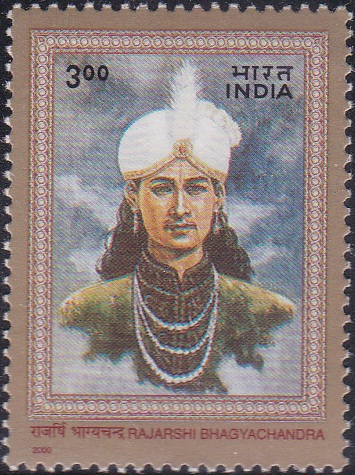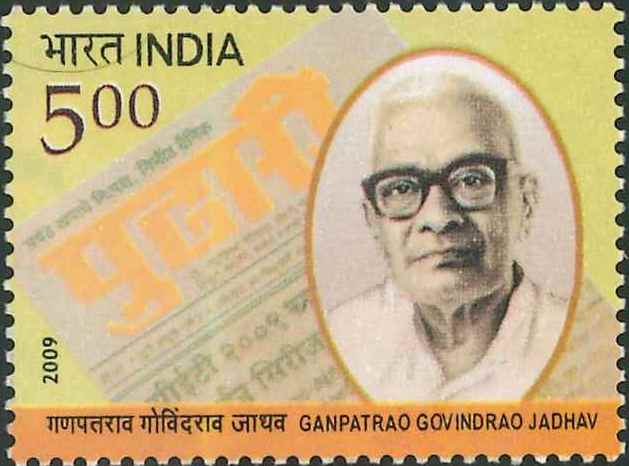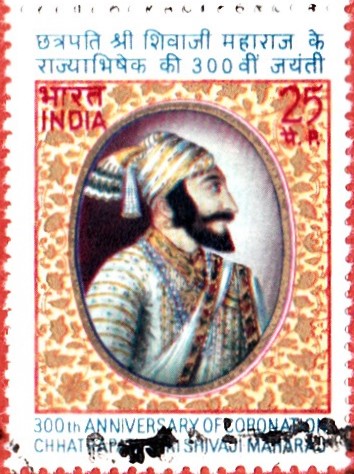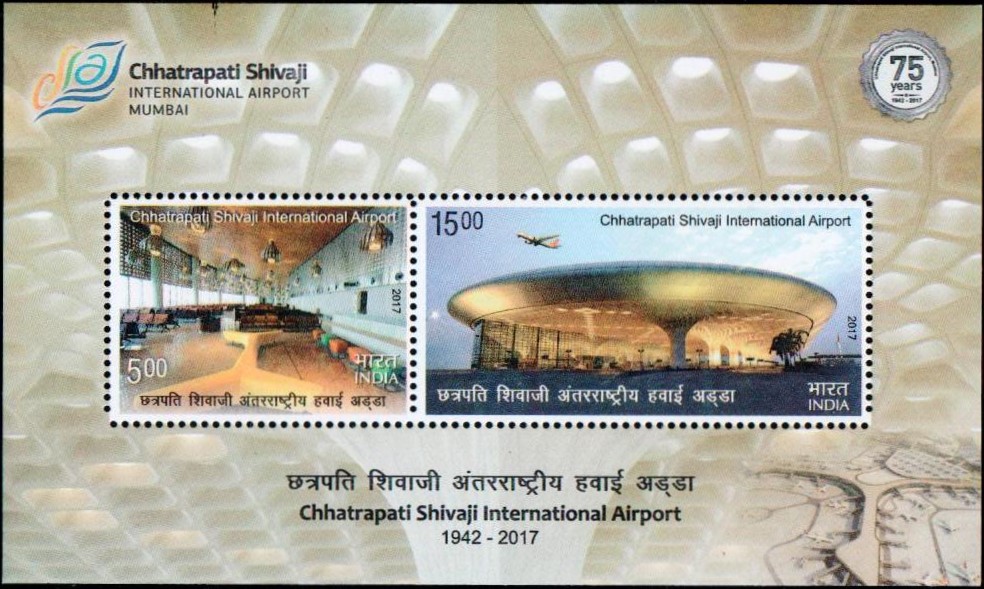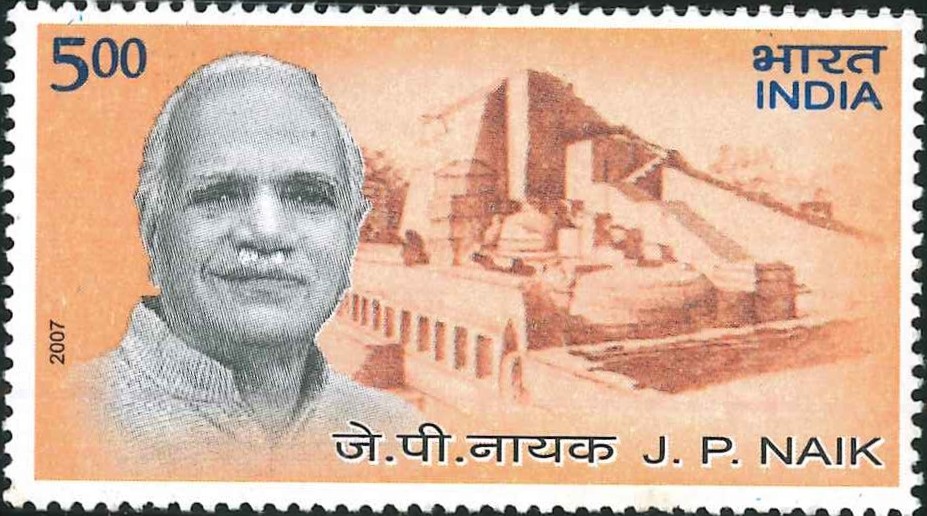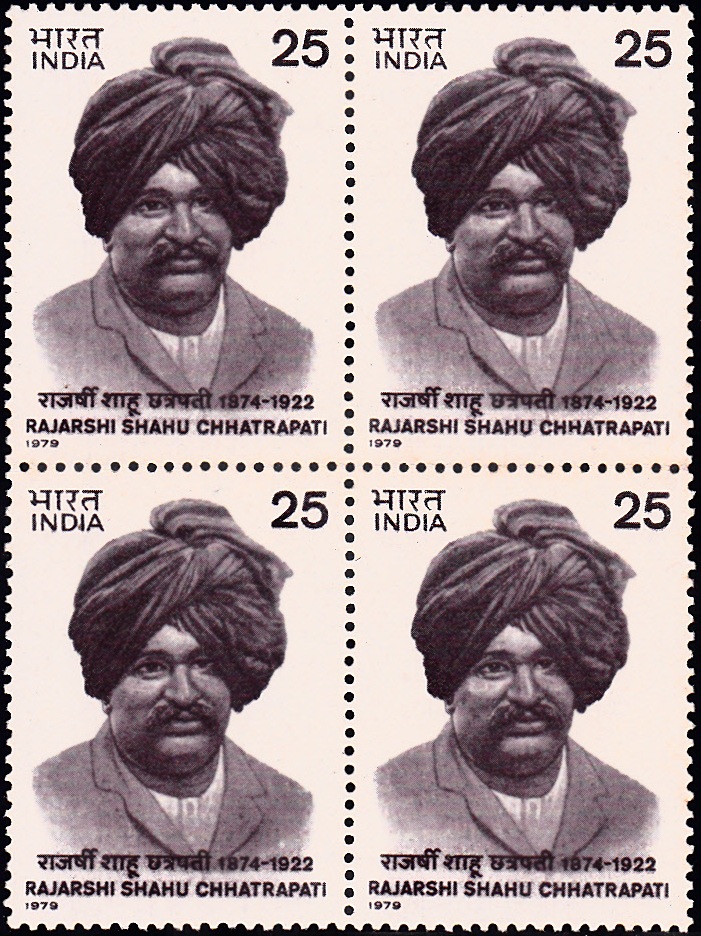
Rajarshi Shahu Chhatrapati
A commemorative postage stamp on Shahu of Kolhapur, a Raja (1894-1900) and Maharaja (1900-22) of Indian princely state of Kolhapur from Bhonsle dynasty of Marathas :
Issued on May 1, 1979
Description of Design : The design of the stamp is vertical and depicts the portrait of Rajarshi Shahu Chhatrapati.
Type : Block of 4 Stamps, Mint Condition
Colour : Plum
Denomination : 25 Paise
Overall size : 3.91 X 2.90 cms.
Printing size : 3.55 X 2.54 cms.
Perforation : 13 X 13
Watermark : Printed on unwatermarked adhesive stamp paper
Number printed : 30,00,000
Number per issue sheet : 35
Printing process : Photogravure
Designed and printed at : India Security Press
Name : Yeshwantrao Ghatge (Shahaji of Kolhapur)
Born on Jul 26, 1874
Died on May 6, 1922 at Bombay, India
About :
- Rajarshi Shahu Chhatrapati was born on 26th July 1874, as Yeshwantrao, the eldest son of Shrimant Jaysingrao alias Abasaheb Ghatge, the Ruler of Kagal (Junior). On the death of Maharaja Shivaji IV of Kolhapur in 1883, Maharani Anandibai, his widow, adopted Yeshwantrao who, later on, came to be called as Shahu Chhatrapati. He became the Ruler of Kolhapur State when he was only 20 years old.
- A firm believer in the dictum that administration is for the welfare of the people, Shahu Chhatrapati set about his task with determination and imagination. He carried forward the social revolution triggered by Mahatma Jyotiba Phule in Maharashtra for social equality and human rights. Many eminently practical steps which he took to improve the lot of the under-privileged and the weak included, even at that distant period of time, the abolition of bonded labour and the provision of education and employment for the backward and the depressed classes.
- He tried his best to break the shackles of caste system and open the gates of education and public offices to all. He also tried to restrict child marriage and to encourage widow re-marriage. He introduced free education in Kolhapur and set up a chain of hostels where the children of the poor would be housed free of charge.
- By improving irrigation and establishing co-operatives he became the harbinger of the first green revolution. He was a champion of the labour and the downtrodden.
- Shahu‘s vision of a secular India which would practise social equality, liberty and fraternity is in keeping with the ideals enshrined in the present-day India’s Constitution. This speaks for his extraordinary liberalism, modernism and foresight. A social revolutionary, a true democrat, a visionary, a patron of the theatre, music and sports and a prince of the masses, Chhatrapati Shahu was a many-splendoured personality who thought and acted far ahead of his times.
- He died in Bombay on May 6, 1922, at the early age of 48.



